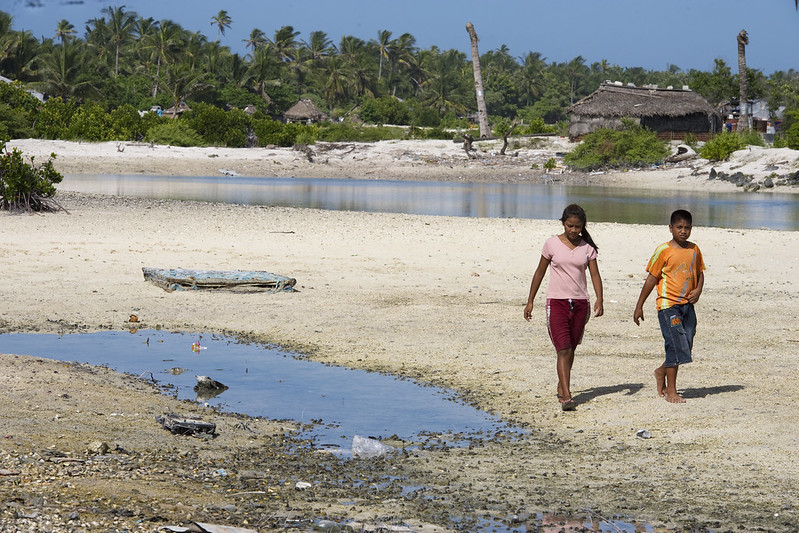How Nonprofits Are Helping Deliver Medical Supplies to Kiribati
 Kiribati is a stretch of 33 islands within the Pacific Ocean, 21 of those being populated. The country is unique in that these islands are spread apart— across 3.5 million square kilometers, to be exact. This presents a unique challenge amidst denizens of the atolls and transportation of medical supplies in Kiribati.
Kiribati is a stretch of 33 islands within the Pacific Ocean, 21 of those being populated. The country is unique in that these islands are spread apart— across 3.5 million square kilometers, to be exact. This presents a unique challenge amidst denizens of the atolls and transportation of medical supplies in Kiribati.
Background
While it is true that Kiribati has struggled to transport medical supplies to all of its atolls and islands, the health issues of the country go far deeper than a lack of supplies. Droughts and flooding have left the region struggling to maintain access to clean water, which in turn creates the perfect conditions for diseases like tuberculosis to flourish. Poor nutrition and poverty further exacerbate these health issues. Due to this, more than 25% of adults older than 24 in Kiribati have Type 2 Diabetes.
With the dire health conditions in Kiribati, the lack of medical supplies in Kiribati remains an important topic within the government. The sheer remoteness of the islands is the first issue. Getting ships to and from the islands is a challenge all by itself, as Kiribati is one of the most dispersed countries in the world, according to the Médecins Sans Frontières (MSF) South Asia.
Medical supplies in Kiribati arrive by boat or plane and often arrive too late and too infrequently for those who need them. At times, the supplies have taken so long to arrive that the valuable medicine inside the shipments expires long before they can make their way to Kiribati’s shores, MSF reports. When the supplies arrive, they are often expensive due to difficulties in sourcing them.
A Silver Lining
While sourcing medical supplies in Kiribati has proven itself to be a consistent challenge for the country, many organizations have recently taken up the initiative to help Kiribati source medical supplies for its people. Specifically, The World Bank is helping improve supply chains so that the more remote islands of Kiribati can keep their clinics stocked with the important medicines locals need to stay healthy.
Prevention is also one of the key factors in the plan to tackle the issues with medical supplies in Kiribati. COVID-19, while difficult to navigate in the region, ended up proving to be a learning opportunity on how to navigate widespread disease. Closing ports early on allowed Kiribati to get a head start on combating the disease, which inspired officials to use that same caution moving forward. With help from UNICEF and the India-UNDP fund Kiribati was able to create the Risk Communication and Community Engagement Committee in early 2021. This committee focuses on catching diseases that could become larger threats early on to avoid communities being taken by surprise. This committee has been instrumental in the continued fight against COVID-19 and other major diseases since then.
Thanks to the India-UNDP fund, Kiribati was able to secure funding for the purchase and transport of medical supplies in Kiribati for the committee. The collaboration helped establish 34 health centers across the country, each with the goal of community outreach by making home visits and leading dialogues about disease prevention. In the end, these facilities have been extremely important in the prevention of diseases and promotion of health amongst Kiribati’s more remote populations.
Moving Forward
While the lack of medical supplies in Kiribati continues to be an uphill battle, support from outside organizations like UNICEF and The World Bank has eased the burden of this struggle. While there is still plenty of work necessary from both officials and community leaders to make sure that the population has access to medical supplies, Kiribati is on the path to success.
– Mackenzie Scott
Mackenzie is based in Indianapolis, IN, USA and focuses on Good News and Global Health for The Borgen Project.
Photo: Flickr
